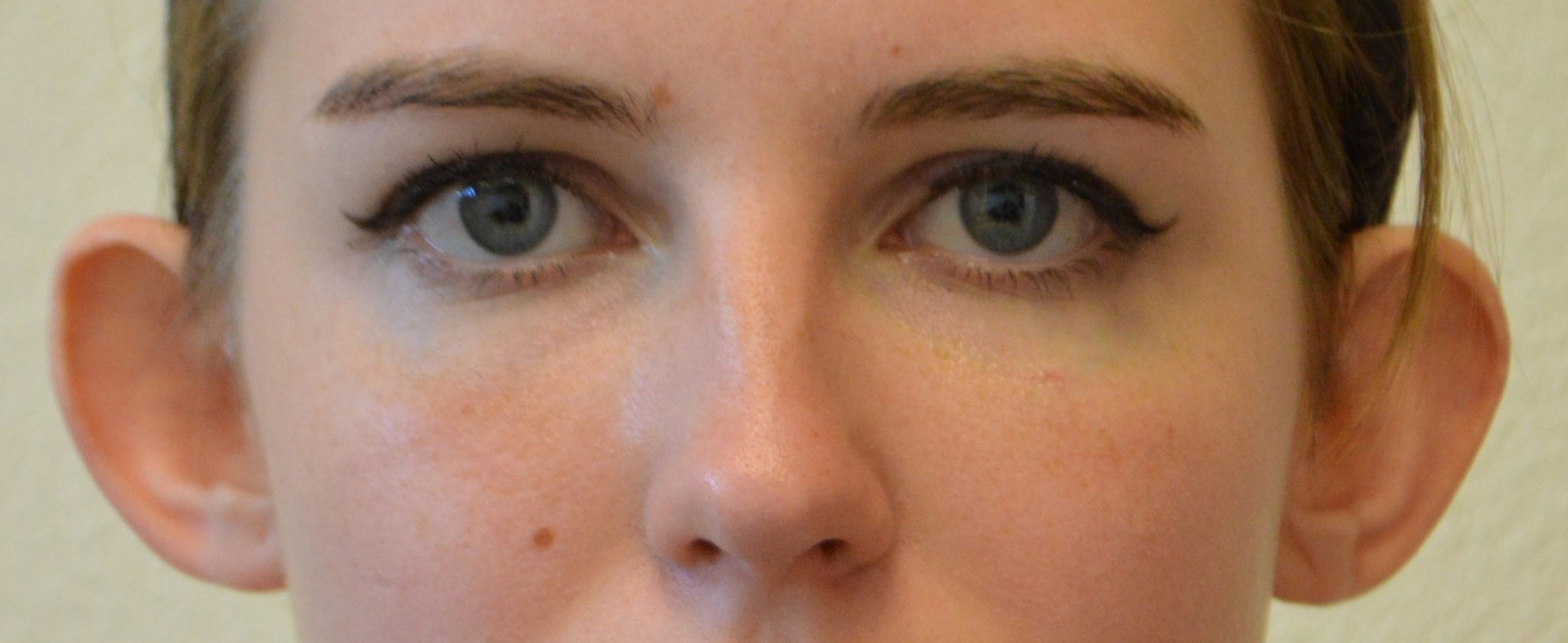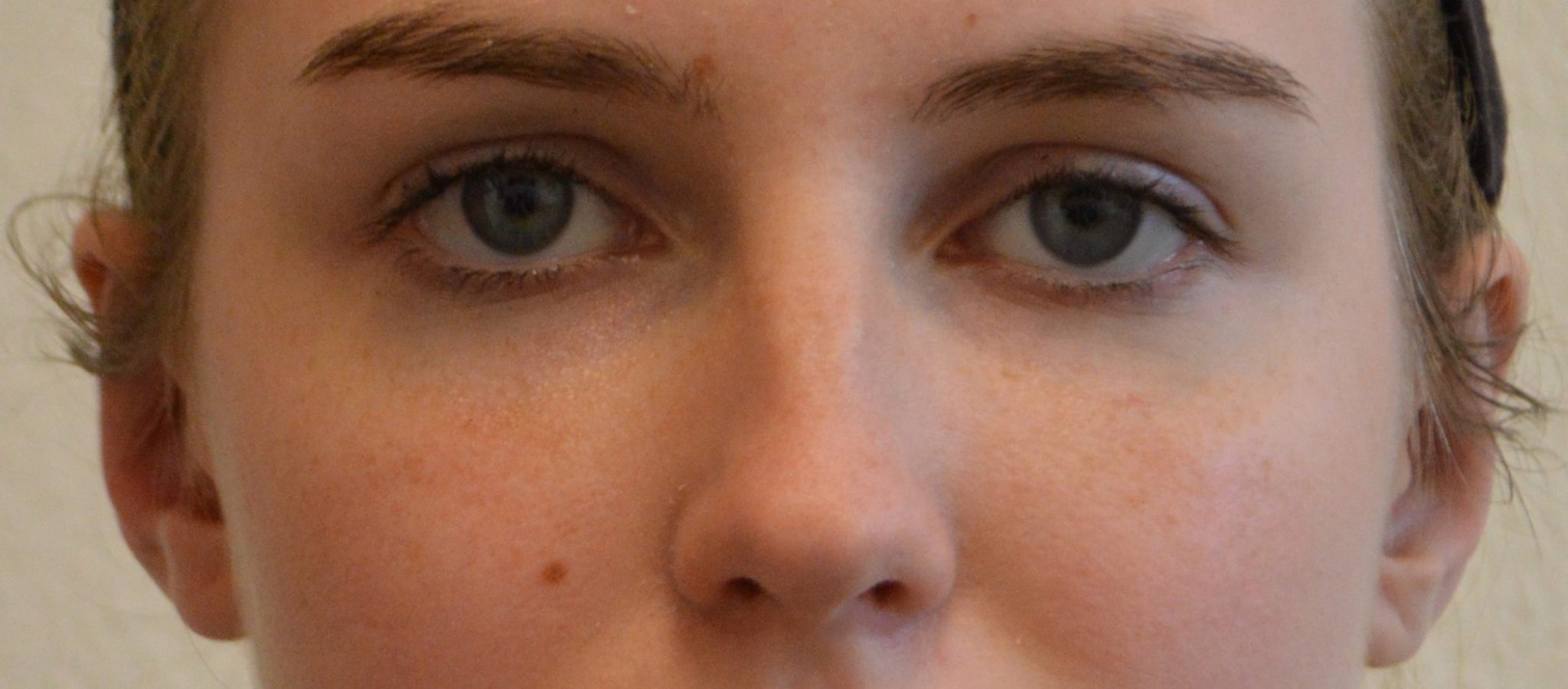
The ears are almost fully grown by age 4. When ears are prominent, protruding more than normal from the head, affected people often become very self-conscious. Children and young adults begin concealing their ears. Boys may grow their hair long, and girls may stop pulling their hair back into ponytails. Otoplasty surgery is a great way to correct this problem and restore self-confidence.
Fort Worth physicians have recognized Dr. Kelly Kunkel’s outstanding care of patients and have voted him a Top Doc 19 times in Fort Worth, Texas Magazine!
What Causes Prominent Ears?
People who have prominent ears have cartilage that did not form correctly. A normal ear has a fold in the cartilage just in front of the rim of the ear (refer to the photograph to the right). This is called the anti-helix. Most people with prominent ears have an anti-helix that did not form correctly. A second area, called the conchal bowl, may not form correctly and may contribute to a prominent ear. That’s the “bowl” of the ear near the ear canal. Excessive conchal bowl cartilage may make the ear stand out away from the head. Dr. Kunkel will identify the areas involved and discuss them with you during your consultation.

Who is a Candidate for Otoplasty?
Ideal candidates for otoplasty are individuals — often children over age 5, teens, or adults — who have prominent ears that significantly impact their self-esteem. Candidates should be in good general health, non-smokers, and have realistic expectations about the outcomes. Otoplasty is commonly sought by parents who want to improve the confidence of their child and avoid teasing, but many adults also choose this surgery later in life.
If your ears stick out noticeably, appear uneven, or have an unusual shape due to genetic factors or injury, otoplasty may be right for you. Dr. Kunkel customizes each procedure to meet the patient’s unique anatomy and aesthetic goals.
Benefits of Otoplasty
Otoplasty offers both cosmetic and psychological benefits. Some of the key advantages include:
- Improved facial balance and symmetry
- Reduction of ear prominence
- Permanent correction of congenital deformities
- Minimal visible scarring with incisions hidden behind the ears
- Boost in self-confidence and emotional well-being
- Highly predictable outcomes with long-term results
Many patients report increased self-esteem and greater freedom in their hairstyle choices shortly after recovery. For children, the social and emotional benefits can be particularly profound.

Otoplasty Procedure Details
Dr. Kunkel performs otoplasty surgery in an outpatient surgery center. You are put to sleep under the direction of an anesthesiologist (general anesthesia). The surgery typically takes about 2½ hours to complete. An incision is made on the back of your ear, exposing the cartilage. The cartilage is sculpted into a new shape, in most cases creating a more natural-appearing anti-helix. Sutures are placed internally to help create and maintain the new shape of the anti-helix. The conchal bowl is also addressed as needed. Additional sutures may be placed to pull the entire ear cartilage complex closer to the scalp. The incision is closed with dissolving sutures. A plastic cup dressing is placed to protect the ears and is worn for a few days.
Recovery After Otoplasty Surgery
Initially the ears appear swollen and purplish. The skin may be numb. Swelling and bruising become less noticeable to others after about 3 or 4 weeks. Dr. Kunkel typically has otoplasty patients wear a headband 23 hours a day for the first month. After that the headband may be worn at night only for another few weeks. Sporting activities should be avoided during the first month after surgery, particularly contact sports like basketball, soccer, lacrosse, field hockey, football, and volleyball. People involved in dance may become active after about two weeks, but the ears will be noticeably swollen during that time. Patients begin shampooing their hair on the second or third day after surgery.
One of the most fun things about this surgery is seeing patients come to the office with their hair pulled back within a week or two after the surgery. Confidence often soars after this procedure, and many patients quickly begin wearing the hairstyles that they have wanted to wear. Dr. Kunkel makes a point of telling his adolescent patients to thank their parents for providing this surgery for them. Otoplasty surgery may be a profoundly rewarding experience!
Otoplasty - Before & After


Risks Of Otoplasty Surgery
Every surgical procedure includes risks. All operations, from hernia repairs to rhinoplasty to otoplasty surgery include risks of infection, bleeding, blood clots, and poor healing. Issues that are more unique to otoplasty surgery include differences in shape between the two ears, accumulation of blood under the skin that could require drainage, loss of the new shape of the ear due to a suture breaking, and long-term numbness of an ear.
How Much Does Otoplasty Surgery Cost In Fort Worth?
The cost of otoplasty surgery in Fort Worth by Dr. Kunkel is approximately $8,200. This price includes Dr. Kunkel’s fee, the surgical facility fee, and the anesthesia fee. Prescription medications cost extra. Insurance may pay the majority of the costs of medications but that varies by insurance company.
Why Choose Dr. Kunkel for Otoplasty in Fort Worth?
With over 20 years of surgical experience and recognition as a 19-time Fort Worth “Top Doc,” Dr. Kelly Kunkel brings expert-level skill and a compassionate approach to cosmetic ear surgery. His practice is equipped with an accredited surgical suite, and every patient receives a personalized consultation and treatment plan.
Dr. Kunkel is known for his precision, aesthetic eye, and ability to create natural-looking results that blend harmoniously with a patient’s facial features. Whether correcting childhood ear deformities or addressing concerns in adulthood, he offers superior attention to detail and level of care that make all the difference.
What to Expect During Your Consultation
During your consultation, Dr. Kunkel will assess the structure of your ears and discuss your goals. He will examine factors such as the development of the anti-helix and conchal bowl to identify the cause of prominence. You’ll receive a complete overview of the surgical process, recovery timeline, and expected results.
For children and adolescents, parental support and involvement are key, and Dr. Kunkel takes the time to ensure both the patient and family feel informed and confident.
Long-Term Otoplasty Results and Maintenance
Otoplasty results are generally permanent. Once the cartilage is reshaped and secured, the ears maintain their new position. Following all post-operative care instructions (including wearing the headband and avoiding impact activities) will help ensure optimal healing and long-term success.
As with any cosmetic procedure, aging may cause subtle changes over time; however, most patients enjoy stable results that last a lifetime.
Schedule a Consultation
If prominent ears are affecting your or your child’s confidence, otoplasty with Dr. Kunkel in Fort Worth may be the solution. With compassionate care, advanced techniques, and a proven track record of exceptional outcomes, Dr. Kunkel helps patients achieve both aesthetic goals and a renewed sense of self-esteem.
Contact our office today to schedule your personal consultation and learn more about your options for ear surgery in Fort Worth, TX. Call 817.335.5200.
